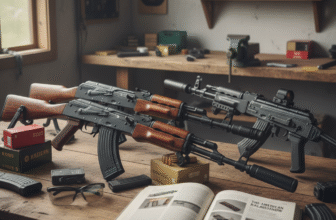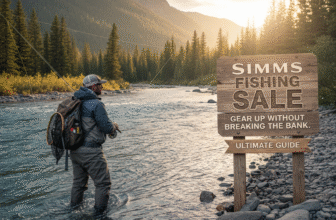
Navigating the waters: Your comprehensive guide to buying a boat
The allure of the open water, the sun on your face, and the gentle rocking of a boat beneath your feet – it’s a dream many Americans share. Whether you’re envisioning leisurely fishing trips, exhilarating watersports, or tranquil sunset cruises, owning a boat can unlock a world of recreation and relaxation. However, the journey to boat ownership can be as complex as navigating a tricky channel. This comprehensive guide will help you chart a course towards finding the perfect vessel for your needs and budget.
Defining your boating dreams: What type of boat is right for you?
Before you even start browsing listings, the most crucial step is determining what kind of boating experience you’re seeking. The world of boats is incredibly diverse, ranging from small, simple kayaks to massive, luxurious yachts. Consider these key factors:
- Primary Use: Will you be fishing, waterskiing, cruising, sailing, or overnighting? Each activity demands different features. A dedicated fishing boat will prioritize features like rod holders and livewells, while a cruising boat will focus on comfort and amenities.
- Waterways: Where will you be boating? Calm lakes, rivers, coastal waters, or the open ocean? A small lake might be perfect for a pontoon boat, while offshore fishing requires a seaworthy vessel with a deep-V hull.
- Passengers: How many people do you typically plan to have on board? This will dictate the size and seating capacity you need.
- Budget: Boats range in price from a few hundred dollars for a used kayak to millions for a luxury yacht. Establish a realistic budget early on, factoring in not just the purchase price, but also ongoing costs like insurance, maintenance, storage, and fuel.
- Experience Level: Are you a seasoned boater or a complete novice? Beginners might want to start with a smaller, easier-to-handle boat.
Types of boats: A closer look
Once you’ve considered your needs, explore the various types of boats available:
- Fishing Boats: This broad category includes everything from small aluminum jon boats to large center console boats designed for offshore fishing. Key features include rod holders, livewells, fish finders, and plenty of deck space.

- Aluminum Fishing Boats: Durable, lightweight, and relatively affordable, aluminum boats are a popular choice for freshwater fishing.
- Bass Boats: Specifically designed for bass fishing, these boats are typically low-profile, fast, and equipped with powerful trolling motors and sophisticated electronics.
- Center Console Boats: Versatile and popular for both fishing and recreational boating, center console boats feature a central helm station, offering 360-degree access to the water.
- Pontoon Boats: Known for their stability and spacious decks, pontoon boats are ideal for leisurely cruising, entertaining, and family outings. They are typically powered by an outboard motor and are well-suited for calm waters.
- Deck Boats: Similar to pontoon boats, deck boats offer ample deck space, but with a more traditional V-hull design, providing better performance in choppy water.
- Bowriders: These popular runabouts feature seating in the bow area, making them great for families and watersports. They are typically powered by sterndrive or outboard motors.
- Ski and Wakeboard Boats: Designed for watersports, these boats feature powerful engines, specialized hulls that create large wakes, and ballast systems to further enhance wake size.
- Wakeboard Boats: Specifically designed for wakeboarding, these boats feature towers for attaching tow ropes and sophisticated ballast systems.
- Sailboats: Powered by the wind, sailboats offer a unique and rewarding boating experience. They range from small dinghies to large cruising yachts.
- Cruising Sailboats: Designed for longer trips and overnight stays, cruising sailboats feature comfortable cabins and amenities.
- Cabin Cruisers: These powerboats offer comfortable accommodations for overnight stays, including sleeping berths, a galley (kitchen), and a head (bathroom).
- Trawlers: Known for their fuel efficiency and seaworthiness, trawlers are designed for long-distance cruising.
- Yachts: Generally referring to larger, more luxurious vessels, yachts can be either powerboats or sailboats and offer a wide range of amenities.
- Personal Watercraft (PWCs): Often referred to by brand names like Jet Ski or WaveRunner, PWCs are small, agile vessels designed for one to three riders.
New vs. Used: Weighing the options
The decision to buy a new or used boat is a significant one. Each option has its advantages and disadvantages:
- New Boats:
- Pros: Warranty coverage, latest technology and features, customization options, no previous owner history.
- Cons: Higher initial cost, rapid depreciation.
- Used Boats:
- Pros: Lower initial cost, slower depreciation, potentially more boat for your budget.
- Cons: Potential for hidden problems, limited warranty coverage (if any), may require repairs or upgrades.
The buying process: Steps to take
Once you’ve chosen the type of boat and decided between new and used, follow these steps:
- Set a Realistic Budget: Include purchase price, taxes, registration fees, insurance, maintenance, storage, and fuel. Get pre-approved for financing if needed.
- Research and Compare: Browse online listings, visit boat shows, and talk to boat owners. Compare different models and features.
- Inspect Thoroughly (Used Boats): Hire a qualified marine surveyor to conduct a pre-purchase inspection. This is crucial to identify any potential problems.
- Sea Trial: Take the boat for a test drive to assess its performance, handling, and overall condition.
- Negotiate the Price: Be prepared to negotiate the price, especially on used boats.
- Complete the Paperwork: Ensure all necessary paperwork, including the title, registration, and bill of sale, is completed correctly.
- Secure insurance:Get boat insurance.
- Check trailer (if applicable):Ensure the trailer is in good condition.
Financing your boat purchase
Many boat buyers finance their purchase through a marine loan. These loans are similar to auto loans and are offered by banks, credit unions, and specialized marine lenders. Shop around for the best rates and terms. Factors affecting your interest rate include your credit score, the loan amount, and the loan term.
Essential boating gear and accessories
Beyond the boat itself, you’ll need some essential gear and accessories:
- Life Jackets: Required by law for every person on board. Choose US Coast Guard-approved life jackets that are appropriate for the size and weight of each passenger.
- Safety Equipment: Fire extinguisher, flares, first-aid kit, throwable flotation device, horn or whistle, navigation lights.
- Anchor and Rode: An appropriately sized anchor and sufficient anchor line (rode) are essential for anchoring.
- Dock Lines and Fenders: Used to secure your boat to a dock and protect it from damage.
- Navigation Tools: GPS, chartplotter, compass, VHF radio.
- Cleaning Supplies: Boat soap, brushes, and other cleaning supplies to keep your boat looking its best.
- Optional Extras: Depending on your boating activities, you might also want fishing gear, watersports equipment, a cooler, a grill, or other amenities.
Boat maintenance: Keeping your vessel shipshape
Regular maintenance is essential to keep your boat in good condition and protect your investment. This includes:
- Engine Maintenance: Follow the manufacturer’s recommended maintenance schedule, including oil changes, filter replacements, and tune-ups.
- Hull Cleaning: Regularly wash and wax the hull to prevent corrosion and maintain its appearance.
- Bottom Paint (for boats stored in the water): Apply anti-fouling paint to prevent the growth of marine organisms.
- Winterization (in cold climates): Properly prepare your boat for winter storage to prevent damage from freezing temperatures.
- Trailer Maintenance (if applicable): Inspect and maintain the trailer’s tires, brakes, and lights.
Boating safety: Staying safe on the water
Boating safety is paramount. Take a boating safety course, understand the rules of navigation, and always operate your boat responsibly. Here are some key safety tips:
- Wear a Life Jacket: Always wear a life jacket, and ensure all passengers do the same.
- Check the Weather: Be aware of the weather forecast before heading out, and be prepared for changing conditions.
- File a Float Plan: Let someone know where you’re going and when you expect to return.
- Avoid Alcohol: Boating under the influence of alcohol is illegal and dangerous.
- Maintain a Safe Speed: Operate your boat at a safe speed for the conditions.
- Be Aware of Your Surroundings: Watch out for other boats, swimmers, and hazards.
- Know the Rules of Navigation: Understand the “rules of the road” for boating.
- Carry a VHF Radio: A VHF radio is essential for communicating with other boats and the Coast Guard in case of an emergency.
- Have a working fire extinguisher.
Enjoy the ride!
Buying a boat can be significant investiment. By carefully considering your needs, doing your research, and following these guidelines, you can find the perfect boat to enjoy countless hours of fun and relaxation on the water. Remember always prioritize safety, and respect the marine environment.







